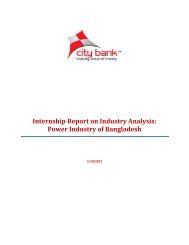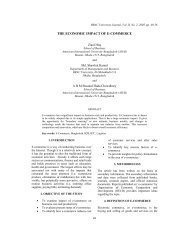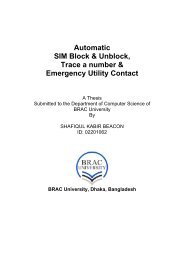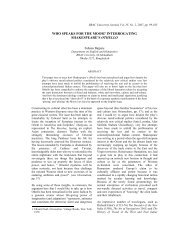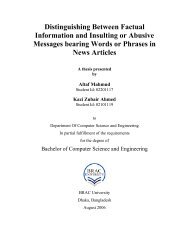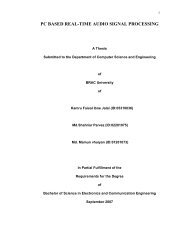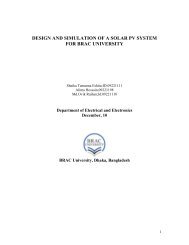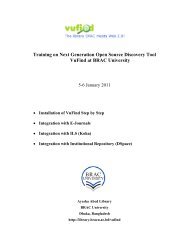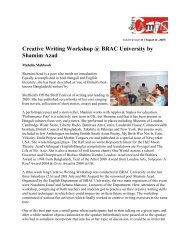LITERATURE SURVEY OF AUTOMATIC FACE RECOGNITION ...
LITERATURE SURVEY OF AUTOMATIC FACE RECOGNITION ...
LITERATURE SURVEY OF AUTOMATIC FACE RECOGNITION ...
You also want an ePaper? Increase the reach of your titles
YUMPU automatically turns print PDFs into web optimized ePapers that Google loves.
CHAPTER II<br />
HOW A COMPUTER CAN PERFORM THIS TASK (AFR)<br />
2.1 Face identification (”Who am I?”)<br />
Fig.2.1. face query from the database<br />
It’s a onetomany matching process that compares a query face image<br />
against all the template images in a face database to determine the identity of the<br />
query face. The identification of the test image is done by locating the image in<br />
the database that has the highest similarity with the test image. The identification<br />
process is a closed test, which means the sensor takes an observation of an<br />
individual that is known to be in the database. The test subject’s (normalized)<br />
features are compared to the other features in the system’s database and a<br />
similarity score is found for each comparison. These similarities scores are then<br />
numerically ranked in a descending order. The percentage of times that the<br />
highest similarity score is the correct match for all individuals is referred to as the<br />
“top match score”.<br />
2.2 Introduction of AFR<br />
Face recognition is a task humans perform remarkably easily and<br />
successfully. But the automatic face recognition seems to be a problem that is<br />
still far from solved. In spite of more than 30 years of extensive research, large<br />
13



